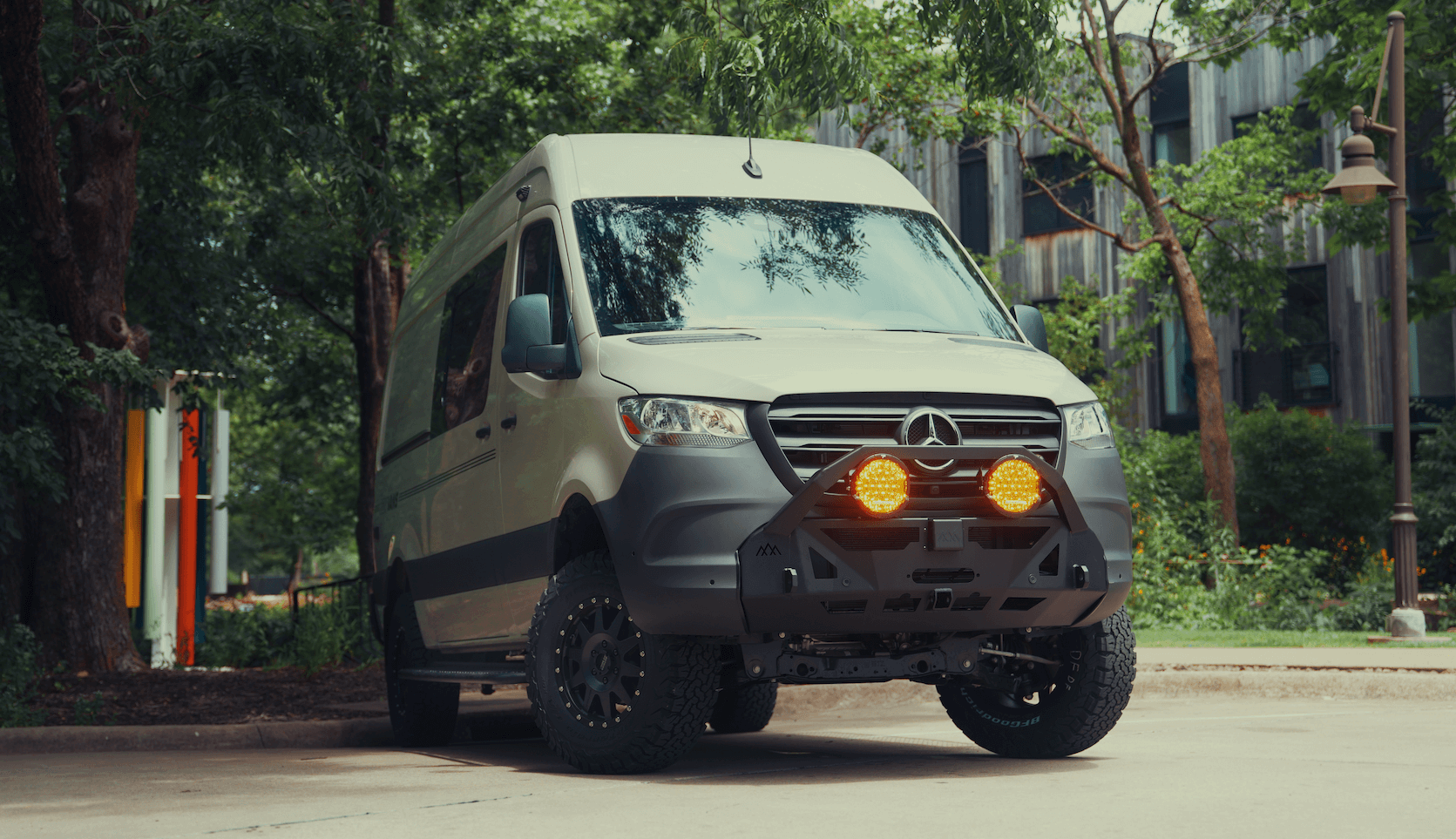Recreational Vans

A van’s flat nose and tall sides push a large wall of air. Two numbers matter most: the drag coefficient and frontal area. Together they create CdA, the real driver of highway efficiency. Sharp edges cause airflow to separate, form vortices, and tug on the van from behind. Add yaw from crosswinds and the wake grows, so the steering feels busy and fuel economy drops. Speed multiplies the penalty because drag rises with the square of velocity.
Weight matters in city driving, but on long highway runs aerodynamics dominates. Removing 50 pounds helps on hills. Removing a giant rooftop box often helps everywhere. Think shape first, then mass.
Dropping from 75 to 65 mph can deliver meaningful range and calmer steering. When crosswinds spike, choose wind sheltered routes or adjust travel windows. Planning beats fighting the wheel for hours.
Start on the roof. Unused racks, baskets, MAXTRAX stacks, and tall antennas punch holes in the air. If you need them, add a leading fairing and keep gear as low and tight as possible. Pick low profile lights and slim solar panels with clean edges. Mount satellite hardware close to the roof with smooth transitions.
At the front, small air dams and grille blocks can help in cool weather, but only if cooling stays within spec. Keep the grille and radiators clean, align body panels, and replace missing undertray pieces. On the sides, slim mirrors and flush windows make a difference. At the rear, do not add flat ladders that act like sails unless you need them. If you carry a spare tire or box on the door, choose tapered shapes or covers that round the leading edge.
The air under the van is messy. Reinstall or upgrade belly pans to reduce turbulence. Keep exhaust and wiring routed tight to the floor. Wheel well airflow improves with smooth liners and correctly sized mud flaps. Proper tire pressure keeps rolling resistance down and stabilizes sidewalls in crosswinds.
Use steady throttle with long, gentle inputs so the transmission stays in its efficient range. Set cruise a little lower on windy days to shrink the wake and keep the cabin quiet. Maintain a generous following gap; disturbed air behind big trucks can bounce a tall van around. When gusts hit, ease off the throttle slightly and let the van settle instead of sawing at the wheel. Align the van regularly and verify toe settings to reduce scrub and wandering.
Fuel economy also depends on smart packing. Heavy items low and between the axles reduce body roll and improve stability when wind loads change. Balance left to right so gusts do not find easy leverage. Before long trips, remove seasonal gear from the roof, clean the windshield and mirrors, and secure any loose exterior straps that can whistle or flap.
Small aerodynamic wins stack. A smooth roof, tidy underbody, aligned wheels, and disciplined speed can add up to impressive range without changing the way you camp or haul bikes. Treat the van like a moving building: round edges where you can, keep surfaces clean, and avoid sharp step changes that trip the flow.
For owners who want professional fit and finish, airflow friendly upfits can integrate low profile racks, clean lighting, and tuned suspension that rides level with your travel load. The goal is simple: reduce drag, tame crosswinds, and make the drive feel effortless.
Recreational vans | Custom build vans | Mainstream vans
Ready for a van that cuts through the breeze with less effort and more confidence? Our specialists refine airflow with low profile roof solutions, streamlined accessories, clean underbody protection, and ride tuning that fits your travel style. Whether you want a partial upfit that solves a few pain points or a complete custom build, we focus on real world gains you can feel on every mile. Tell us about your routes, your gear, and your goals, and we will shape the van around them. Fill out the form and let’s design your next upgrade.
Ready to turn airflow into free range? Our team designs and builds vans that drive quieter, run cooler, and sip less fuel. From partial upfits to complete custom builds, we integrate low profile racks, airflow friendly lighting, tuned suspension, and clean underbody solutions that work on the highway and at camp. Tell us how you travel and we will craft the van to match. Start your custom consult now.
ADDRESS:
6159 E Huntsville Rd, Fayetteville, AR 72701
PHONE:
(479) 326-9200
EMAIL:
info@ozkvans.com